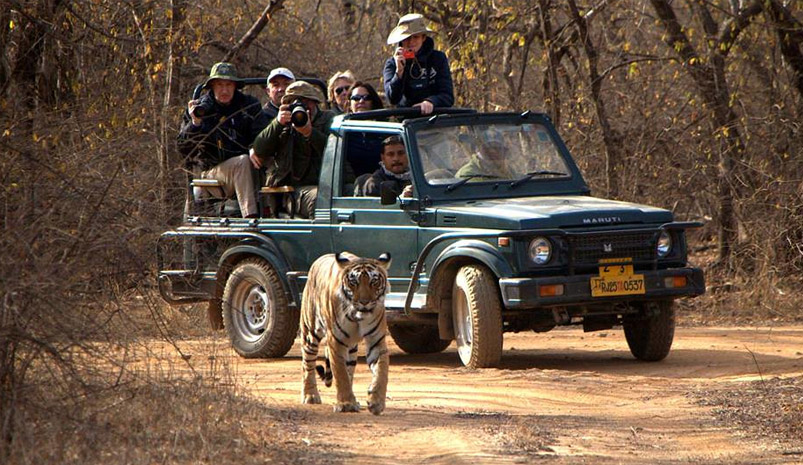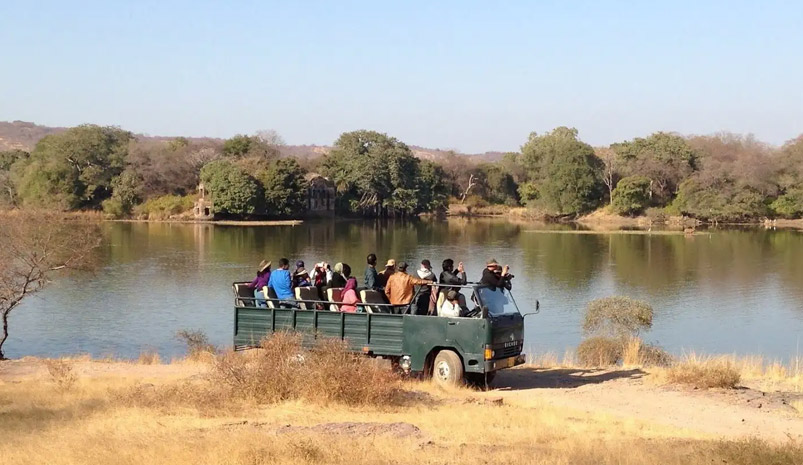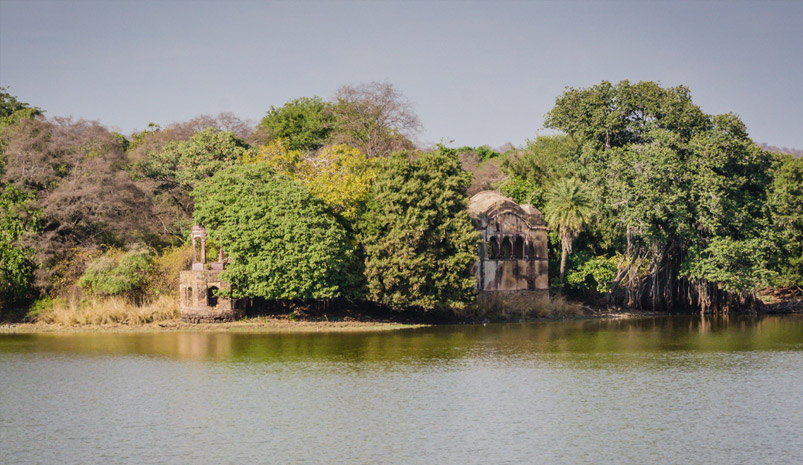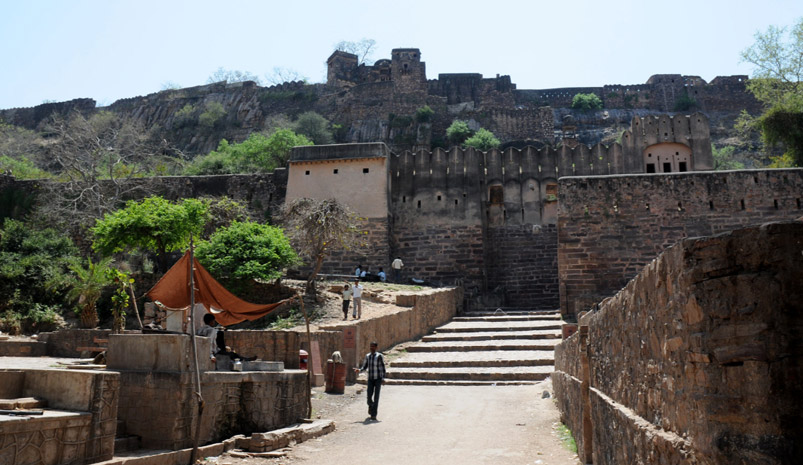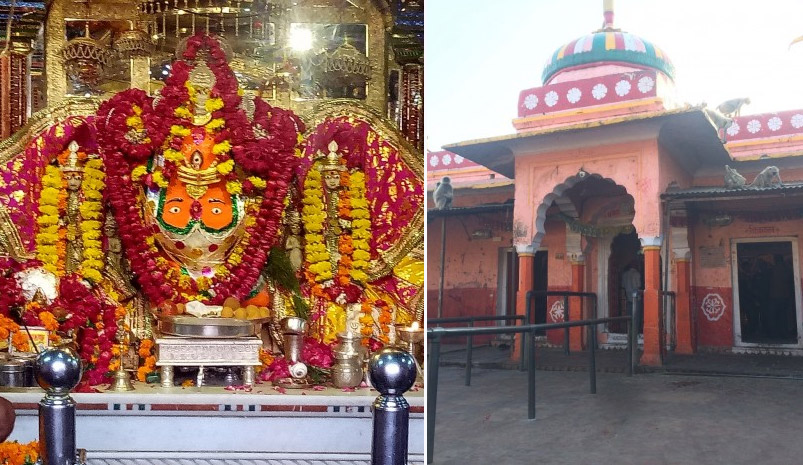Ranthambore
Ranthambore is a popular destination located in the state of Rajasthan, India, known for its wildlife and historical significance. Here are the key attractions and activities in Ranthambore:
- Ranthambore National Park: The main highlight of Ranthambore is its national park, which is renowned for its tiger population. Spread over an area of approximately 400 square kilometers, the park offers jeep and canter safaris that allow visitors to spot tigers, as well as other wildlife such as leopards, deer, sloth bears, and a variety of bird species.
- Ranthambore Fort: Situated within Ranthambore National Park, the Ranthambore Fort is a UNESCO World Heritage Site. This ancient fort dates back to the 10th century and offers panoramic views of the surrounding landscape. It is a fascinating attraction for history enthusiasts and offers glimpses into the region’s rich past.
- Padam Talao: Padam Talao is one of the largest lakes within Ranthambore National Park. It is a picturesque spot where visitors can enjoy the tranquil surroundings and observe wildlife. The lake is known for its scenic beauty, especially during sunrise and sunset.
- Kachida Valley: Kachida Valley is a scenic location within Ranthambore National Park that offers breathtaking views of rugged terrain, rocky outcrops, and dense vegetation. It is a popular area for wildlife sightings, including various bird species.
- Trinetra Ganesh Temple: Located inside the Ranthambore Fort, the Trinetra Ganesh Temple is dedicated to Lord Ganesha. It is believed to be one of the oldest and most revered Ganesha temples in Rajasthan. Visitors often seek blessings before embarking on wildlife safaris.
- Surwal Lake: Situated near the Ranthambore National Park, Surwal Lake is a serene water body that attracts numerous migratory birds. Birdwatchers and nature enthusiasts can spot a variety of avian species here, making it a paradise for birdwatching.
- Village Tours: Explore the nearby villages to get a glimpse of rural life and experience the local culture of Rajasthan. Interacting with the villagers, visiting traditional homes, and witnessing traditional crafts and art forms can be a rewarding experience.
Ranthambore offers a unique blend of wildlife, history, and natural beauty, making it a captivating destination for nature lovers and history enthusiasts alike.
History
Ranthambore has a rich history that dates back to ancient times. The region was ruled by various dynasties, including the Chauhans, Rajputs, Mughals, and Marathas. The famous Ranthambore Fort, built in the 10th century, stands as a testament to the region’s historical significance. It played a crucial role in defending against invasions and witnessed numerous battles and sieges. Ranthambore was later captured by the Mughals and became a hunting ground for the royals. In 1973, Ranthambore was declared a wildlife sanctuary, and in 1980, it became a national park, preserving its historical and ecological treasures for future generations.
Geography
Ranthambore is located in the Sawai Madhopur district of Rajasthan, India. It is nestled in the southeastern part of the Aravalli Range, known for its rugged hills and rocky outcrops. The region is characterized by dry deciduous forests, open grasslands, and several lakes and water bodies. The prominent Banas and Chambal rivers flow near Ranthambore. The national park spans an area of approximately 392 square kilometers, comprising diverse habitats that support a wide range of wildlife species. The landscape of Ranthambore offers a picturesque setting with its hills, valleys, and the iconic Ranthambore Fort perched atop a hill, providing a stunning backdrop to the wildlife-rich surroundings.
Weather
Ranthambore experiences a tropical climate with distinct seasons. Here’s an overview of the weather in Ranthambore:
Summer (April to June): Summers in Ranthambore are hot and dry, with temperatures ranging from 35°C to 45°C (95°F to 113°F). The days can be scorching, and it is advisable to carry lightweight and breathable clothing, sunscreen, and stay hydrated.
Monsoon (July to September): Ranthambore receives moderate to heavy rainfall during the monsoon season. The temperatures range from 25°C to 35°C (77°F to 95°F), providing some relief from the summer heat. The park turns lush and vibrant, making it a good time for nature lovers and photographers to visit. However, note that some parts of the park may be inaccessible during heavy rains.
Autumn (October to November): Autumn brings pleasant weather to Ranthambore, with temperatures ranging from 20°C to 30°C (68°F to 86°F). The days are pleasant, and the evenings are cooler. It is an ideal time to visit the park, as wildlife sightings are common, and the weather is comfortable for safaris.
Winter (December to February): Winters in Ranthambore are mild and pleasant. The temperatures range from 10°C to 25°C (50°F to 77°F). Mornings and evenings can be chilly, so it is recommended to carry light woolens. The park is open for safaris during this time, and it is a popular season for wildlife enthusiasts to visit.
Overall, the best time to visit Ranthambore National Park is from October to March when the weather is pleasant, and wildlife sightings are at their best. However, each season offers a unique experience, and the park remains closed during the monsoon season (July to September). It is advisable to check the weather forecast and plan your visit accordingly to make the most of your trip to Ranthambore.
How to reach
Ranthambore, located in the Sawai Madhopur district of Rajasthan, India, can be reached through various modes of transportation. Here are the common ways to reach Ranthambore:
By Air: The nearest airport to Ranthambore is Jaipur International Airport, located approximately 160 kilometers away. From the airport, you can hire a taxi or take a pre-booked cab to reach Ranthambore. The journey takes around 3-4 hours.
By Train: Sawai Madhopur Junction is the nearest railway station to Ranthambore, located approximately 12 kilometers away. It is well-connected to major cities in India like Delhi, Jaipur, Mumbai, and Kolkata. Many trains pass through this junction, making it convenient to reach Ranthambore by rail. From the station, you can hire a taxi or take an auto-rickshaw to reach your accommodation.
By Road: Ranthambore is well-connected by road to major cities in Rajasthan and neighboring states. National Highway 52 connects Ranthambore to cities like Jaipur, Delhi, and Agra. You can either drive to Ranthambore in your private vehicle or hire a taxi. Several bus services, both government-operated and private, also connect Ranthambore to nearby cities.
By Bus: Ranthambore has a bus stand located near the Sawai Madhopur railway station. Rajasthan State Road Transport Corporation (RSRTC) operates regular bus services to Ranthambore from cities like Jaipur, Delhi, and Agra. Private bus operators also run services to Ranthambore from various locations.
Once you reach Ranthambore, it is advisable to book a jeep safari or canter safari to explore the Ranthambore National Park. Many hotels and resorts in the area provide transportation services for park visits. It is recommended to plan your travel in advance, especially during peak tourist seasons, and check the availability of transportation modes for a hassle-free journey to Ranthambore.
Getting Around
Getting around in Ranthambore can be done through various modes of transportation. Here are the common ways to navigate the area:
Jeeps and Canters: Jeeps and canters are the primary means of transportation for exploring Ranthambore National Park. These open-top vehicles are specially designed for wildlife safaris and can accommodate a small group of people. They are operated by authorized safari providers and accompanied by trained guides who help spot wildlife and provide information about the park.
Private Vehicles: If you have your own vehicle or have hired one, you can use it to travel around Ranthambore. Having your own transportation gives you flexibility in exploring the surrounding areas, including the Ranthambore Fort and nearby attractions. However, it is advisable to hire a local guide or use GPS navigation, as the park and surrounding roads may have specific entry points and restrictions.
Auto-rickshaws: Auto-rickshaws are a convenient mode of transportation for short distances within the town of Sawai Madhopur, which serves as the gateway to Ranthambore. They are readily available and can take you to local markets, restaurants, and other attractions in the town.
Cycle-rickshaws: For short distances or within the narrow lanes of Sawai Madhopur, cycle-rickshaws are a popular option. These manually-pulled rickshaws can take you to nearby places at a leisurely pace.
Walking: Ranthambore is relatively compact, and walking can be a pleasant way to explore the local areas and soak in the natural beauty. However, it is important to follow park regulations and avoid walking in restricted areas or near wildlife habitats.
It’s important to note that Ranthambore National Park has designated zones for safari tours, and entry is allowed only with authorized safari vehicles. Additionally, for a smooth experience, it’s advisable to make prior arrangements for safari bookings, as they can be in high demand, especially during peak tourist seasons.

